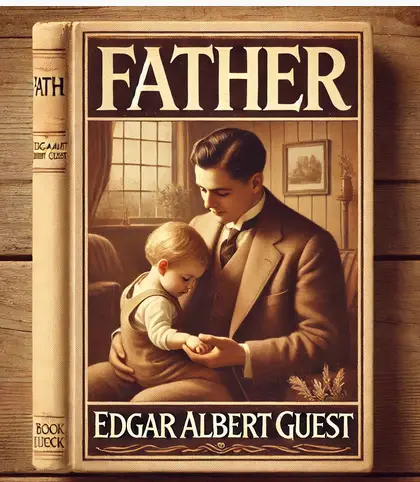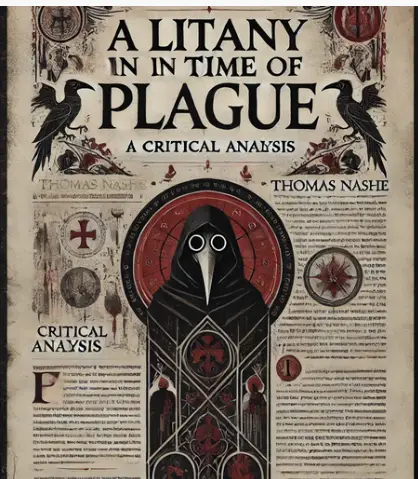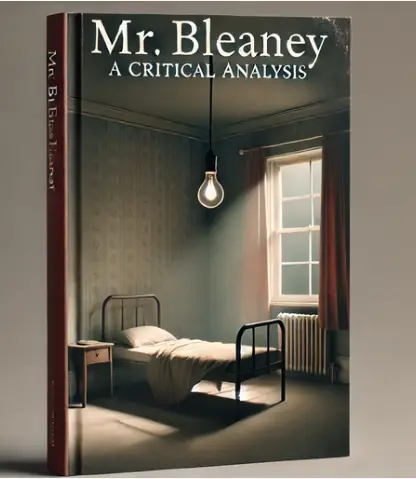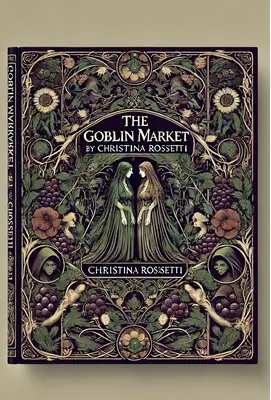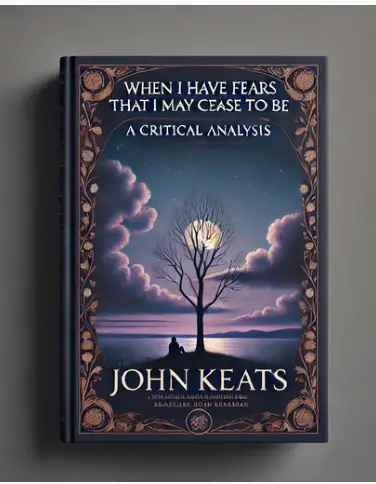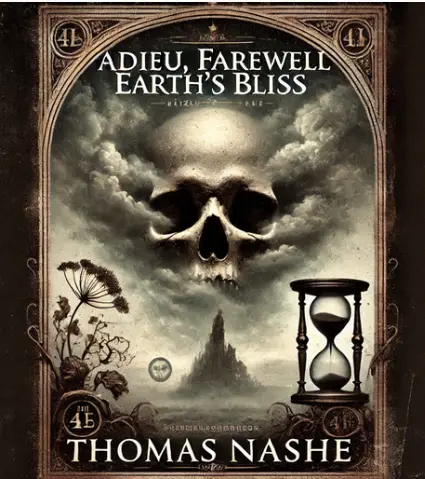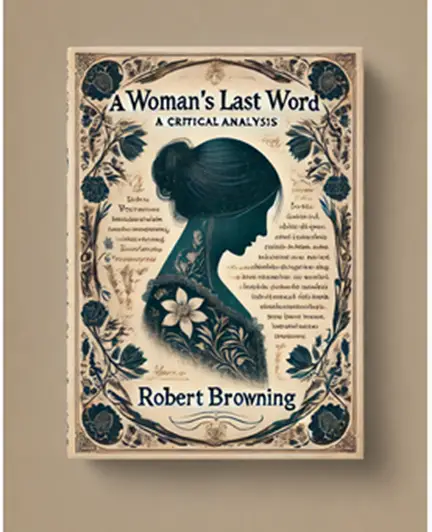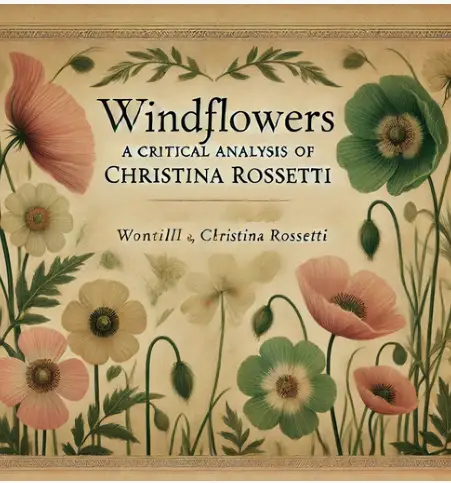
Introduction: “Before You Were Mine” by Carol Ann Duffy
“Before You Were Mine” by Carol Ann Duffy, first appeared in her 1993 poetry collection Mean Time, explores themes of memory, maternal love, identity, and the passage of time. Through reflective and sometimes bittersweet language, Duffy imagines her mother’s life before she was born, portraying her as a carefree, youthful woman. The poem’s tone is tender yet possessive, hinting at the complexities in parent-child relationships, especially in how children view their parents’ past lives. The vivid imagery and personal voice contribute to the poem’s popularity, as it resonates with readers by illuminating universal experiences of nostalgia, familial bonds, and the inevitable changes wrought by time. This balance of intimacy and universality makes “Before You Were Mine” a celebrated piece in contemporary poetry.
Text: “Before You Were Mine” by Carol Ann Duffy
I’m ten years away from the corner you laugh on
with your pals, Maggie McGeeney and Jean Duff.
The three of you bend from the waist, holding
each other, or your knees, and shriek at the pavement.
Your polka-dot dress blows round your legs. Marilyn.
I’m not here yet. The thought of me doesn’t occur
in the ballroom with the thousand eyes, the fizzy, movie tomorrows
the right walk home could bring. I knew you would dance
like that. Before you were mine, your Ma stands at the close
with a hiding for the late one. You reckon it’s worth it.
The decade ahead of my loud, possessive yell was the best one, eh?
I remember my hands in those high-heeled red shoes, relics,
and now your ghost clatters toward me over George Square
till I see you, clear as scent, under the tree,
with its lights, and whose small bites on your neck, sweetheart?
Cha cha cha! You’d teach me the steps on the way home from Mass, stamping stars from the wrong pavement. Even then
I wanted the bold girl winking in Portobello, somewhere
in Scotland, before I was born. That glamorous love lasts
where you sparkle and waltz and laugh before you were mine.
Annotations: “Before You Were Mine” by Carol Ann Duffy
| Line | Annotation |
| I’m ten years away from the corner you laugh on | The speaker, Duffy as a child, reflects on her mother’s life before her birth. She imagines herself observing from a temporal distance. |
| with your pals, Maggie McGeeney and Jean Duff. | Duffy mentions her mother’s friends, creating a sense of familiarity and emphasizing her mother’s social life and individuality before motherhood. |
| The three of you bend from the waist, holding | The image captures youthful joy and a carefree moment among friends. It suggests unity and support in friendship. |
| each other, or your knees, and shriek at the pavement. | “Shriek” implies laughter and freedom, a spontaneous and joyous moment. The focus on “pavement” hints at the ordinary setting elevated by happiness. |
| Your polka-dot dress blows round your legs. Marilyn. | The polka-dot dress and “Marilyn” evoke Marilyn Monroe, highlighting the glamour of the mother’s past self, perhaps an icon the speaker admires. |
| I’m not here yet. The thought of me doesn’t occur | The speaker acknowledges her absence, focusing solely on her mother’s life before she was born. |
| in the ballroom with the thousand eyes, the fizzy, movie tomorrows | Descriptions of “ballroom” and “thousand eyes” create a glamorous, dreamlike scene; “movie tomorrows” suggest a sense of possibility and excitement. |
| the right walk home could bring. I knew you would dance | There’s a sense of destiny in how the speaker “knew” this side of her mother, as though their connection transcends time. |
| like that. Before you were mine, your Ma stands at the close | The speaker imagines her mother’s life under her own mother’s watchful eye, suggesting generational cycles of maternal care and discipline. |
| with a hiding for the late one. You reckon it’s worth it. | Her mother faces potential punishment for staying out late but values her freedom and enjoyment, hinting at a rebellious or carefree spirit. |
| The decade ahead of my loud, possessive yell was the best one, eh? | The speaker reflects on how her mother’s life might have changed after her birth, implying her mother’s youthful freedom was her happiest period. |
| I remember my hands in those high-heeled red shoes, relics, | Childhood memory of playing with her mother’s shoes, symbolizing a tangible link to her mother’s past self. “Relics” suggests reverence for this past. |
| and now your ghost clatters toward me over George Square | The mother’s former self is almost ghostly, coming to the speaker from the past, evoking a haunting, nostalgic feel in a familiar place. |
| till I see you, clear as scent, under the tree, | Memory becomes vivid and sensory, “clear as scent” implying that the past self is close, almost tangible. |
| with its lights, and whose small bites on your neck, sweetheart? | Suggests intimacy and romance in her mother’s youth, the speaker wonders about this past lover. |
| Cha cha cha! You’d teach me the steps on the way home from Mass, stamping stars from the wrong pavement. | The dance represents the continuity between mother and daughter, passing on joy and traditions. “Wrong pavement” might imply independence, freedom from norms. |
| Even then I wanted the bold girl winking in Portobello, somewhere | The speaker desires to connect with her mother’s bold, youthful self, admiring her rebelliousness. |
| in Scotland, before I was born. That glamorous love lasts | “Glamorous love” may refer to the mother’s past life, full of beauty and excitement, which endures in the speaker’s memory. |
| where you sparkle and waltz and laugh before you were mine. | The poem concludes with a nostalgic celebration of the mother’s life before becoming a mother, cherishing her independence and joy. |
Literary And Poetic Devices: “Before You Were Mine” by Carol Ann Duffy
| Device | Example | Explanation |
| Alliteration | “polka-dot dress” | Repetition of consonant sounds, “d,” creating rhythm and emphasizing imagery. |
| Anaphora | “I am not” (repeated phrase) | Repeated at the beginning of lines or stanzas, it stresses the theme of time and possession. |
| Assonance | “your Ma stands at the close with a hiding for the late one” | Repetition of vowel sounds, “a” and “o,” creating a melodious effect that enhances the emotional tone. |
| Caesura | “Marilyn.” | The period after “Marilyn” breaks the line abruptly, adding emphasis to the comparison with Monroe, a symbol of glamour. |
| Colloquial Language | “reckon it’s worth it” | The use of informal language brings a conversational, relatable tone, reflecting everyday speech. |
| Direct Address | “You” | The poem addresses the mother directly, creating intimacy and immediacy. |
| Enjambment | “The three of you bend from the waist, holding / each other” | Continuation of lines without a pause reflects the flowing nature of memories and connection. |
| Flashback | Entire poem, describing mother’s past | The poem itself is a flashback, as the speaker imagines her mother’s life before she was born. |
| Hyperbole | “the ballroom with the thousand eyes” | Exaggeration to emphasize the intensity of the mother’s experiences and her allure in her youth. |
| Imagery | “Your polka-dot dress blows round your legs” | Vivid description evokes a clear image, allowing readers to visualize the mother’s youthful joy and freedom. |
| Juxtaposition | “ghost clatters toward me over George Square” | Juxtaposes the liveliness of the mother’s ghostly figure against the present, highlighting the contrast between past and present. |
| Metaphor | “Your ghost clatters toward me” | The “ghost” metaphor represents the mother’s past self, suggesting nostalgia and the lingering presence of memories. |
| Metonymy | “the corner you laugh on” | The “corner” represents the mother’s youthful social life and independence, symbolizing freedom and joy. |
| Onomatopoeia | “Cha cha cha!” | The words mimic the sounds of dancing, bringing energy to the poem and a sense of lively movement. |
| Personification | “stamping stars from the wrong pavement” | The stars seem to come alive as she stamps on the pavement, adding a magical, dreamlike quality to the memory. |
| Refrain | “Before you were mine” | Repeated at various points, it reinforces the theme of time, ownership, and reflection on the mother’s past. |
| Simile | “clear as scent” | Comparison suggests how memories of the mother are vivid yet ephemeral, akin to a lingering scent. |
| Symbolism | “high-heeled red shoes” | The shoes symbolize the mother’s youth and glamour, linking the past with the present as the speaker plays with them. |
| Tone | Nostalgic and reflective | The tone reflects admiration, wistfulness, and a possessive fondness for the mother’s past self. |
| Visual Imagery | “polka-dot dress blows round your legs. Marilyn.” | Evokes strong visuals of style and glamour, symbolizing the mother’s carefree youth and appeal. |
Themes: “Before You Were Mine” by Carol Ann Duffy
- Nostalgia and Memory: Duffy’s poem is deeply rooted in nostalgia, as the speaker reminisces about her mother’s life before she was born. This nostalgia is illustrated by the vivid imagery in lines like, “Your polka-dot dress blows round your legs. Marilyn,” where the speaker imagines her mother’s youth as glamorous and carefree, akin to the style and allure of Marilyn Monroe. The reference to “George Square” and the “corner you laugh on” also evokes specific memories tied to places, grounding her mother’s youth in real locations that add depth to the speaker’s sense of loss and yearning for a time she never personally experienced.
- The Passage of Time: Duffy emphasizes the inevitable passage of time, especially as it affects personal identity and family dynamics. The speaker reflects on how her mother’s life has transformed from a youthful, carefree existence to one shaped by the responsibilities of motherhood. Lines like, “The decade ahead of my loud, possessive yell was the best one, eh?” suggest that the speaker views her own birth as a turning point in her mother’s life, marking the end of her mother’s freedom. This acknowledgment of time’s effects on identity and lifestyle highlights the sacrifices that often accompany parenthood.
- Maternal Love and Bonding: The poem is infused with a sense of love and admiration for the speaker’s mother, mixed with an intimate possessiveness that underpins their relationship. Duffy writes, “Even then I wanted the bold girl winking in Portobello,” showing the speaker’s longing for her mother’s past self and hinting at a strong, almost childlike desire to know her mother in all facets of her identity. The refrain “Before you were mine” serves as a declaration of the speaker’s strong bond with her mother, suggesting that, despite the changes brought by time and family, the love and connection between mother and child remain.
- Identity and Transformation: Duffy explores the evolution of personal identity, particularly how it changes with age and responsibility. The speaker acknowledges her mother’s youthful, daring persona in lines like, “You reckon it’s worth it,” as her mother disregards potential punishment for staying out late. This carefree spirit contrasts sharply with the later image of the mother as a figure bound to her role in the family. The “high-heeled red shoes” serve as symbols of her mother’s former self, which the speaker reveres as relics of a past life. Through this juxtaposition, Duffy poignantly captures how motherhood often reshapes a person’s identity, making past selves into memories rather than present realities.
Literary Theories and “Before You Were Mine” by Carol Ann Duffy
| Literary Theory | Explanation and Application | References from the Poem |
| Feminist Theory | Feminist theory examines how gender roles and societal expectations influence individual identities. In “Before You Were Mine,” Duffy explores the mother’s life before motherhood, capturing her carefree, independent spirit that contrasts with the expected sacrifices and identity shifts that come with motherhood. The poem highlights the tension between personal freedom and societal expectations for women as caregivers, reflecting on how motherhood can obscure aspects of a woman’s former self. | “The decade ahead of my loud, possessive yell was the best one, eh?” alludes to the freedom the mother had before the demands of motherhood changed her life, underscoring themes of feminine sacrifice and lost identity. |
| Psychoanalytic Theory | Through the lens of psychoanalytic theory, particularly concepts of the subconscious and family dynamics, the speaker’s possessive tone reveals a latent desire to connect with her mother’s former, youthful self. The repeated phrase “Before you were mine” hints at an Oedipal-like desire to “own” her mother’s past self, expressing a subconscious yearning for exclusivity in their bond. The speaker’s longing for the mother’s pre-maternal identity reveals complex feelings of admiration, jealousy, and identification. | The line “I remember my hands in those high-heeled red shoes, relics,” implies a connection between the speaker and her mother’s former self, with the shoes symbolizing her mother’s pre-maternal identity that the speaker wishes to understand or emulate. |
| New Historicism | New Historicism explores literature within its social and historical contexts. Duffy’s poem, set against the backdrop of post-war Britain, suggests societal constraints on women, particularly regarding expected behaviors for young women and mothers. The poem’s references to a youthful, liberated life before motherhood evoke a time when women were beginning to challenge traditional roles, providing insight into the cultural pressures on women in the mid-20th century. | “Cha cha cha! You’d teach me the steps on the way home from Mass,” reflects a blend of traditional and modern elements, where the mother’s “cha cha cha” suggests a lively independence that contrasts with societal expectations from a religiously conservative period. |
Critical Questions about “Before You Were Mine” by Carol Ann Duffy
- How does Duffy portray the mother’s identity before and after motherhood?
- Duffy’s poem deeply reflects on how motherhood alters a woman’s identity, suggesting a duality between the mother’s youthful past and her present as a parent. The speaker idealizes her mother’s carefree self, seen in the vivid image of her “polka-dot dress” blowing around her legs, associating her with the glamour of Marilyn Monroe. This nostalgic portrayal emphasizes the freedom her mother enjoyed before the “loud, possessive yell” of her child shifted her life. The child’s perspective introduces the notion that motherhood transforms the mother’s identity, prompting readers to consider the sacrifices women make and how past selves are often reimagined through the eyes of their children.
- What role does memory play in shaping the speaker’s understanding of her mother?
- Memory serves as a bridge that connects the speaker to her mother’s past, a time before she was born. The speaker pieces together an imagined version of her mother’s life based on fragments and observations, which enhances her understanding of her mother as an individual beyond her parental role. Lines like “I remember my hands in those high-heeled red shoes, relics,” suggest a tactile, almost spiritual link to her mother’s past self. These memories and symbols become sacred artifacts through which the speaker constructs a version of her mother that is more relatable and cherished, highlighting the role of memory in shaping family bonds.
- How does Duffy’s use of possessive language influence the tone and themes of the poem?
- The possessive tone in “Before You Were Mine” creates an intimate yet complex dynamic between the speaker and her mother. The repeated phrase “before you were mine” encapsulates the child’s desire to lay claim to her mother’s past, suggesting a sense of ownership over her identity that predates their relationship. This possessive language underlines the speaker’s desire to understand her mother fully and implies a subtle jealousy toward her mother’s life and relationships before motherhood. The use of “mine” also reflects the transformative bond of parenthood, suggesting that children, in a way, claim their parents’ lives and identities, altering them forever.
- In what ways does Duffy address generational differences and societal expectations in the poem?
- Duffy subtly addresses generational shifts and societal expectations of women through her mother’s youth, a time marked by freedom and rebellion. The mother’s spirited actions, like “shriek[ing] at the pavement” with her friends and disregarding her own mother’s disapproval (“Your Ma stands at the close with a hiding for the late one”), reflect a life of risk and excitement in a conservative era. The speaker admires this boldness, possibly recognizing how societal expectations for women’s behavior differ across generations. Through this juxtaposition, Duffy critiques the pressures imposed on women, highlighting the generational shift toward a more constrained life as her mother transitions into motherhood.
Literary Works Similar to “Before You Were Mine” by Carol Ann Duffy
- “Mother, Any Distance” by Simon Armitage
This poem explores the bond between mother and child, delving into themes of attachment and independence, similar to Duffy’s exploration of maternal relationships and change over time. - “Follower” by Seamus Heaney
Heaney’s poem reflects on a child’s admiration for a parent’s past, mirroring Duffy’s reflection on her mother’s life before she became a parent. - “Eden Rock” by Charles Causley
Causley’s poem nostalgically recreates a family scene, blending memory and idealization of parents in a way that echoes Duffy’s admiration and imaginative connection to her mother’s past. - “The Railway Children” by Seamus Heaney
Heaney’s piece looks at childhood and memory, with themes of familial bonds and the power of youthful perceptions, aligning with Duffy’s reflection on her mother’s identity before she was born. - “Before She Died” by Karen Chase
This poem examines the lingering influence of a parent’s past life on a child, focusing on memory and loss, akin to Duffy’s nostalgic portrayal of her mother’s life before motherhood.
Representative Quotations of “Before You Were Mine” by Carol Ann Duffy
| Quotation | Context | Theoretical Perspective |
| “I’m ten years away from the corner you laugh on” | The speaker imagines a scene from her mother’s life a decade before her birth, setting the reflective, nostalgic tone of the poem. | Psychoanalytic Theory: The speaker’s attempt to understand her mother’s past shows a desire for psychological connection, exploring the identity of her mother separate from motherhood. |
| “Your polka-dot dress blows round your legs. Marilyn.” | Duffy likens her mother to Marilyn Monroe, using glamour as a symbol of youthful freedom. | Feminist Theory: The comparison highlights the mother’s independence and individuality, challenging the traditional image of a mother bound solely to domestic roles. |
| “I’m not here yet. The thought of me doesn’t occur” | The speaker acknowledges her absence, emphasizing the mother’s life untouched by the responsibilities of parenting. | New Historicism: Reflects post-war societal norms, where young women were beginning to explore identities outside of marriage and motherhood. |
| “Before you were mine, your Ma stands at the close with a hiding for the late one.” | The mother’s youth includes a rebellious spirit, seen as she risks punishment for staying out late. | Psychoanalytic Theory: The reference to the mother’s own mother suggests a cycle of familial expectations and the formation of identity through generational dynamics. |
| “The decade ahead of my loud, possessive yell was the best one, eh?” | The speaker humorously suggests that her birth changed her mother’s life, reflecting a possessive tone. | Psychoanalytic Theory: The speaker’s possessiveness over her mother’s past implies an Oedipal desire for exclusivity, revealing latent feelings of jealousy toward her mother’s former independence. |
| “I remember my hands in those high-heeled red shoes, relics,” | The speaker recalls playing with her mother’s shoes, which symbolize her mother’s former self and life. | Feminist Theory: The shoes are artifacts of the mother’s glamorous past, representing lost individuality and the sacrifices of motherhood. |
| “and now your ghost clatters toward me over George Square” | The mother’s past self is depicted as a ghostly presence, haunting the speaker with memories. | Psychoanalytic Theory: This haunting image suggests the unresolved desire of the speaker to fully understand her mother’s complex identity. |
| “Cha cha cha! You’d teach me the steps on the way home from Mass, stamping stars from the wrong pavement.” | The speaker recalls her mother teaching her dance steps, blending sacred and secular imagery. | New Historicism: The contrast between dancing and religious norms reflects the cultural expectations and potential for rebellion in post-war Britain. |
| “Even then I wanted the bold girl winking in Portobello” | The speaker longs to know her mother’s confident, youthful self, before motherhood. | Feminist Theory: This line showcases the speaker’s admiration for her mother’s rebellious spirit, challenging gender norms around female propriety and independence. |
| “That glamorous love lasts where you sparkle and waltz and laugh before you were mine.” | The speaker’s final reflection on her mother’s past encapsulates admiration and nostalgia. | Psychoanalytic Theory: The idealized image of the mother embodies the speaker’s deep-seated attachment and desire to “possess” her mother’s pre-maternal identity, making it part of her own understanding of family. |
Suggested Readings: “Before You Were Mine” by Carol Ann Duffy
- DIMARCO, DANETTE. “Exposing Nude Art: Carol Ann Duffy’s Response to Robert Browning.” Mosaic: An Interdisciplinary Critical Journal, vol. 31, no. 3, 1998, pp. 25–39. JSTOR, http://www.jstor.org/stable/44029809. Accessed 31 Oct. 2024.
- POPP, VALERIE L. “Improper Identification Required: Passports, Papers, and Identity Formation in Jackie Kay’s ‘The Adoption Papers.'” Contemporary Literature, vol. 53, no. 2, 2012, pp. 292–318. JSTOR, http://www.jstor.org/stable/23256720. Accessed 31 Oct. 2024.
- Duffy, Carol Ann. “Poet on Poet: Carol Ann Duffy on Henry Graham.” Ambit, no. 88, 1982, pp. 44–46. JSTOR, http://www.jstor.org/stable/44339000. Accessed 31 Oct. 2024.
- Scannell, Vernon. Ambit, no. 159, 2000, pp. 69–70. JSTOR, http://www.jstor.org/stable/44342000. Accessed 31 Oct. 2024.
